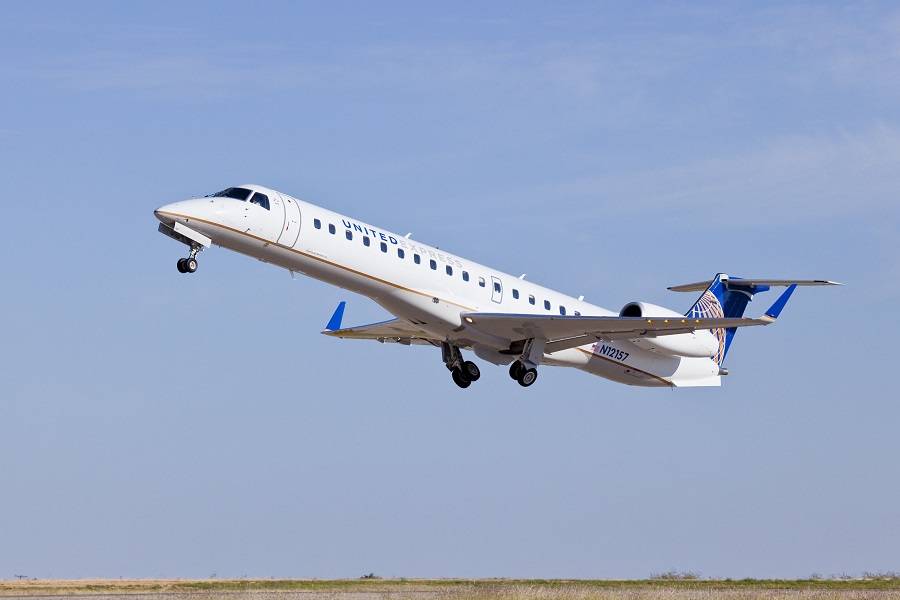A United Express Embraer ERJ-145 was written off and three people got minor injuries, in part because of a faulty ILS signal and… snow.
This accident happened on the 4th of March 2019. The NTSB released its factual report on it earlier this week, revealing a lot of key information. This mishap involves United Express flight UA-4933. It’s a Commutair flight that the regional carrier performs on behalf of United Airlines. The flight originated at Newark Liberty International (KEWR), heading for Presque Isle Northern Maine Airport (KPQI).
The accident flight departed from Newark using runway 4L. There were 28 passengers and 3 crew on board the Embraer for this United Express flight. The departure and cruise portions of the flight were uneventful. Presque Isle Airport doesn’t have a control tower, so the crew tuned to a CTAF frequency. They had to coordinate directly with ground crews, that were keeping the runway clear of snow.
United Express Embraer First Goes Around, Then Crash Lands
But the United Express Embraer flight “went missed” on its first approach to runway 1. The aircraft got as low as 169 feet (AGL) before it started gaining altitude. Visibility was half a mile, but while the First Officer, who was pilot-flying, recognized the airport environment, he wasn’t sure that he could see the runway. Both pilots agreed that the snow made it difficult to see airport features, which were “white on white”.
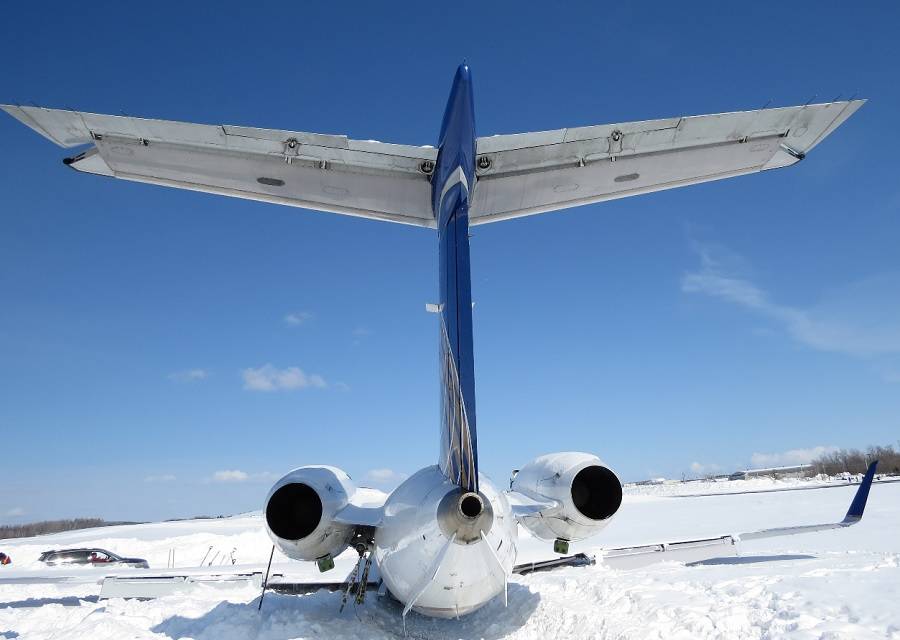
During the second approach, the United Express Embraer made heavy contact with the ground. Its crew were again unsure of what they were seeing. Without a flare, the aircraft reached a maximum acceleration of 3.35 Gs, touching down next to the runway, on its right side. Two passengers and the First Officer got minor injuries. All landing gear legs of the aircraft broke away before the Embraer came to a stop.
After the accident, the First Officer mentioned that he had flown into the same runway several days before. On that occasion, he made a visual approach but noted that the ILS localizer was offset to one side. The First Officer mentioned this to the Captain, during their preflight briefing for this flight.
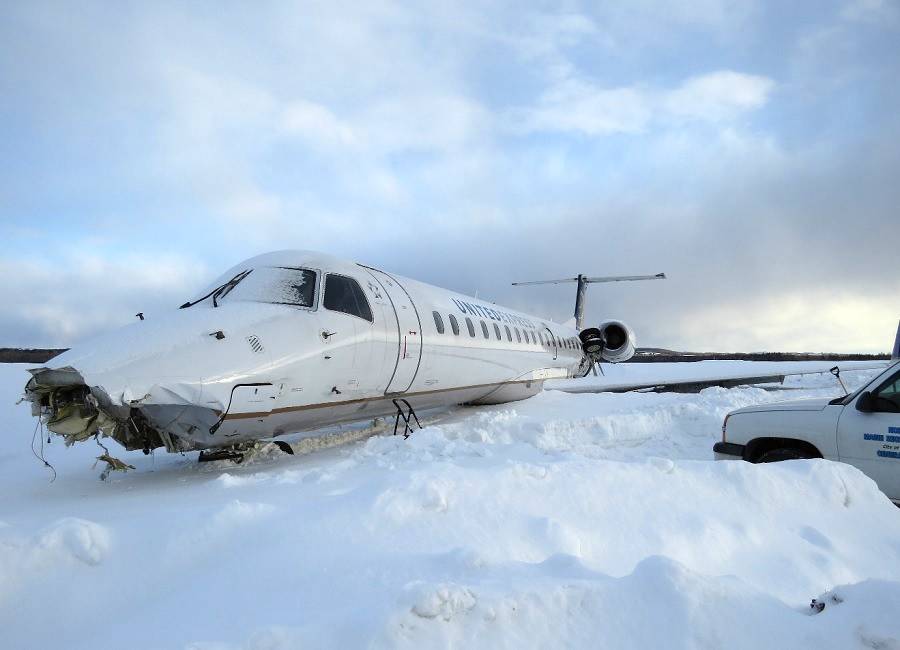
Not Enough Reports?
It later transpired that another Commutair crew was making the same United Express flight in an Embraer ERJ-145, two days before the accident flight. During an ILS approach in much better conditions, this crew noted that the aircraft was aligned with the right side of the runway when their ILS said that they were centered. Since the crew were still at 2,500 feet, they discontinued the ILS approach, landing visually.
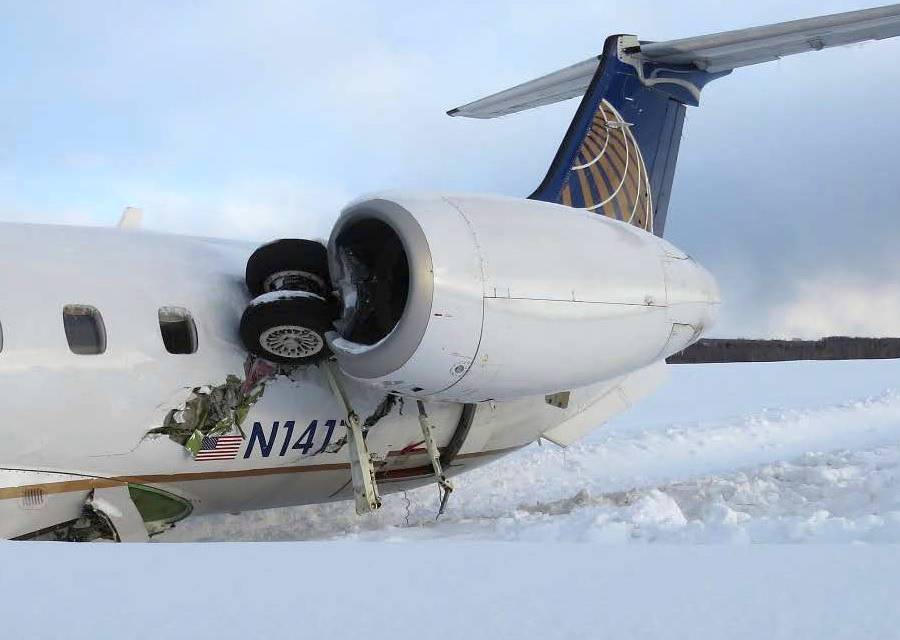
This crew reported the discrepancy to air traffic control. However, technical personnel waited until a second flight crew made the same observation, to confirm it. When it didn’t come for nearly two days, they assumed that the problem no longer existed. But as it turned out, not many aircraft made ILS approaches to this runway, in that period. The United Express accident flight in the Embraer, WAS the next flight.
After the accident, the FAA performed a test flight, making an approach on the same runway. The FAA crew noted the same discrepancy in the localizer. The glideslope signal also had erratic behaviour. But then, ground crews cleared accumulated snow from around (and in front of) the localizer and glideslope antennas. A second FAA test flight after this snow clearance put both the glideslope and localizer within tolerances.
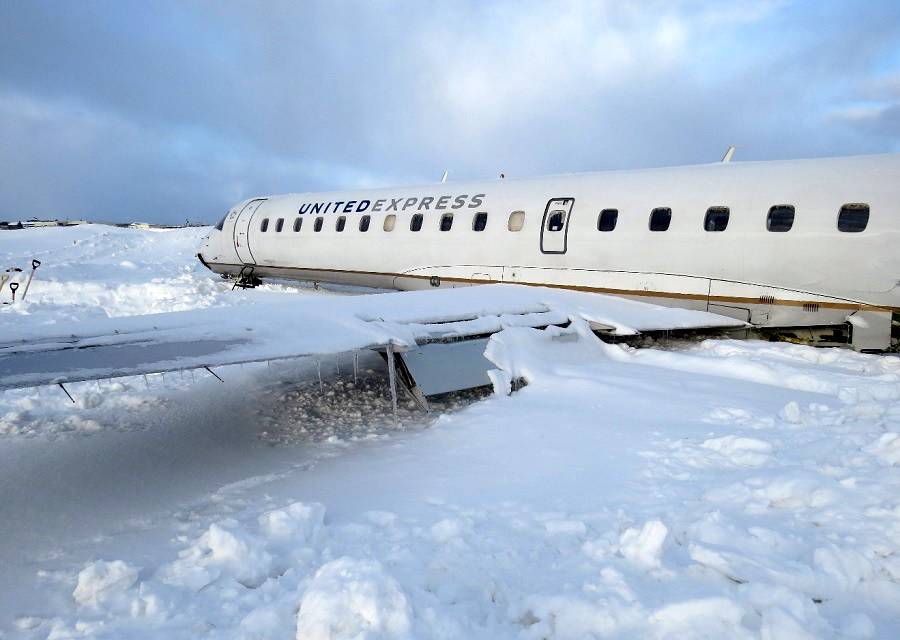
Airport personnel later stated that localizer signal issues were common every winter. But the airport didn’t have a way of testing for these issues. The United Express Embraer ERJ-145XR, tail number N14171, never flew again after this accident. It was just under fourteen and a half years old when the accident happened.

